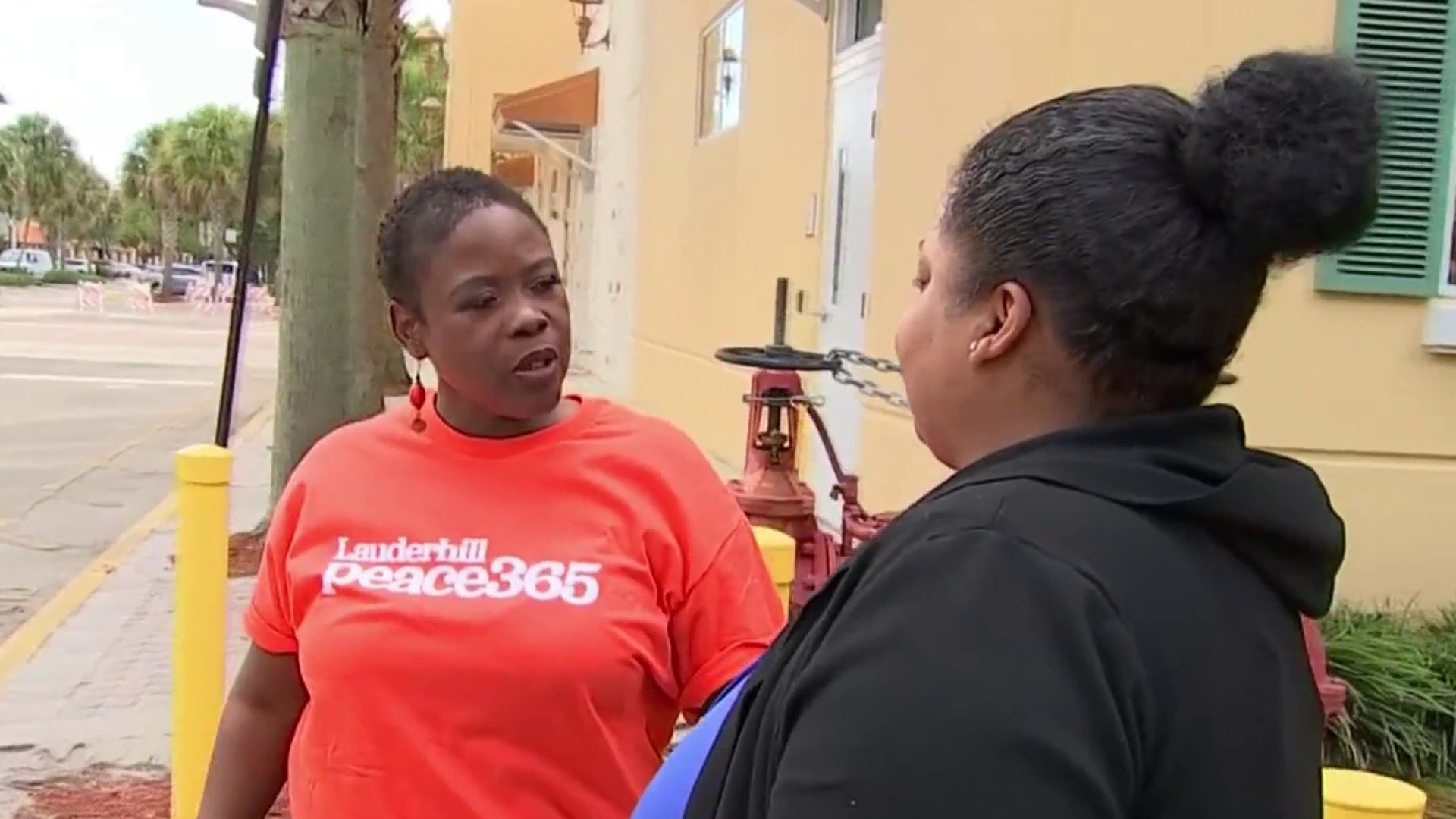Powerful and deadly Hurricane Matthew battered the Bahamas and triggered large-scale evacuations along the U.S. East Coast on Wednesday after inflicting heavy damage on southwest Haiti.
With maximum sustained winds of 115 mph and a death toll of at least 25, the Category 3 storm pounded the southern Bahamas with heavy rain and storm surge on a course expected to take it near the capital city of Nassau. Forecasters said the storm could hit Florida — or come dangerously close — late Thursday or early Friday and then scrape its way up the East Coast toward the Carolinas over the weekend.
Gov. Rick Scott made an impassioned plea with Florida residents to not take any chances with the storm, warning against focusing on the storm's projected path and emphasizing the need to "focus on if it were to make landfall."
"Everyone in the state should be prepared for a direct hit," Scott said at a news conference Wednesday morning, noting a small deviation of the storm's track "could cause catastrophic damage" to Florida's coastal communities.
He urged coastal residents to "leave now" if they are able.
As of 2 a.m. ET, Matthew was heading northwest and maintained the earlier speed at 10 mph with top sustained winds of 115 mph, having weakend slightly since daytime.
Miami-Dade Mayor Carlos Gimenez said Wednesday there is a 25 percent chance of the county getting hurricane force winds, but no evacuations were planned at the moment.
A hurricane warning was in effect for north of Golden Beach in Miami-Dade to the Flagler/Volusia county line and Lake Okeechobee. A tropical storm warning was in effect for the Florida Keys from Seven Mile Bridge eastward.
At least 25 deaths had been blamed on the powerful storm during its weeklong march across the Caribbean, 19 of them in Haiti. The mayor of Petit Goave, a coastal community west of the capital Port-au-Prince, told NBC News 14 people had died there, and the country's Civil Agency has confirmed five people dead with another missing.
Two days after the hurricane rampaged across Haiti's remote southwestern peninsula with roaring winds and flooding rains, local authorities and international aid workers still lack a clear picture of the storm's destruction.
But the weather began calming Wednesday and a way was found around a key bridge that was washed away, allowing convoys and helicopters to start ventruing to marooned corners to assess the damage and determine how to help thousands of people who lost homes, livestock and crops.
Local
"It seems like Haiti dodged a bullet. The news on the radio doesn't seem nearly as bad as it could have been," upholsterer Daniel Wesley said as he walked down a rain-slicked street in downtown Port-au-Prince.
The last Category 4 storm to pound Haiti was Hurricane Flora in 1963, which killed as many as 8,000 people.
Still, Mourad Wahba, the U.N. secretary-general's deputy special representative for Haiti, called the hurricane the biggest humanitarian crisis in Haiti since the devastating earthquake of 2010.
Additionally, four people were killed because of the storm in the Dominican Republic and one each in Colombia and the Carribbean (where a boulder fell on a 16-year-old boy in Saint Vincent and the Grenadines).
Tropical storm conditions began spreading over the southeastern Bahamas early Thursday, and Bahamas Prime Minister Perry Christie voiced concern about the potential impact on the sprawling archipelago off Florida's east coast.
"We're worried because we do not control nature," he said.
There was growing concern on the U.S. East Coast, where nearly two million people were told to evacuate given the threat of Matthew's storm surge up the length of the Bahamas. People raced to supermarkets, gas stations and hardware stores, buying up groceries, water, plywood, tarps, batteries and propane.
Gov. Scott urged coastal residents to prepare for the possibility of a direct hit and line up three days' worth of food, water and medicine. The White House said relief supplies were being moved to emergency staging areas in the Southeast.
"This is a serious storm," President Obama said at a news conference Wednesday. "It is going to building strength on its way to Florida."
The slow-moving storm was expected to drench the coast from the Florida Keys through central Florida, bring storm surge up to 5 feet deep along the Atlantic coast and possibly spawn tornadoes. Even if Matthew doesn't come ashore, its tropical storm-force winds could reach the state.
Mandatory evacuations were already underway in Brevard County, and voluntary evacuations have been activated in St. Lucie County, but Gov. Scott urged other coastal residents potentially in harm's way not to wait to be told to leave.
Officials hope to avoid a repeat of Hurricanes Wilma and Katrina, which caused major damage to South Florida in 2005, and Hurricane Andrew, a Category 5 storm that leveled much of the city of Homestead in 1992.
South Carolina Gov. Nikki Haley ordered residents in Charleston and Beaufort counties to leave on Wednesday ahead of the hurricane. She said evacuations in Georgetown and Horry counties will come on Thursday.
Several cruise ships were rerouted from their scheduled trips to the Caribbeans and Bahamas to Key West, about 40 miles south of the portion of Florida currently not under a tropical storm warning.
Matthew was at one point a Category 5 storm, making it the most powerful hurricane in the region in nearly a decade. It blew ashore around dawn Tuesday in Haiti, the poorest country in the Western Hemisphere and a place where many people live in shacks of wood or concrete blocks.
In Haiti, where international aid efforts were stymied Tuesday because of the lack of access to the hardest-hit areas, many residents of flooded areas seen by Associated Press reporters were wading through shin-high waters.
Muddy rivers and tributaries continued to rise as water flowed down hillsides and mountains, making more flash floods and mudslides possible even as Matthew tracked away from the country.



